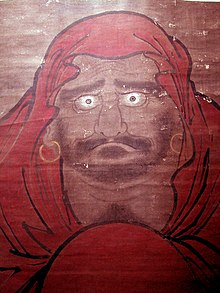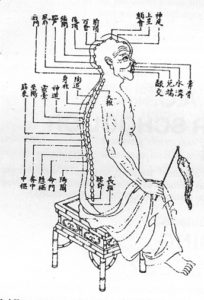Tai Chi Chuan is a Chinese internal martial art, listed as part of the ‘Nei jia quan‘ (‘Internal family boxing’). As such it contrasts with external martial arts (‘Wai jia quan’, where ‘Wai’ translates as ‘External’). The distinction may be traced back to the 17th century, although my teacher points to stone engravings a couple of centuries earlier. It also seems that famous Tai Chi Chuan master Sun Lu Tang was mainly responsible for defining the Internal arts – but what is the difference? There are a few areas to consider.
China vs. India

One definition relates to nationality and origin – internal arts come from China, external from somewhere else. Tai Chi Chuan is associated with Wudang shan (Wudang mountain) and Tai shan, both historical centres of Taoist religion. The contrast is with Shaolin styles, associated with the Shaolin temple, which is Buddhist. Buddhism of course originated in India, so therefore the Shaolin styles are ‘external’ to China. The legend has it that Boddhidharma (Ta Mo in Chinese) taught boxing at the temple, but the history is disputed and it appears that boxing was present at the temple before he arrived.
Training methods
The definition from my teacher relates to training methods, and the best example is the set of exercises known as ‘Nei gong’ (‘Internal work’), where the body is fortified by means of repetitive movements and postures. A result of this training is the ability to withstand blows – having people kick and punch you, or jump on you, is a standard test. The same ability is found in ‘external’ styles – however the training for this is repetitive beating with a wooden instrument. An internal stimulation of the body, as opposed to an external one. Some external arts require practitioners to engage in physically demanding exercise routines which are clearly reliant on strength and agility.
Energetics

Some people consider the difference between Internal martial arts and External ones to be related to how energy is generated and expressed. External arts use ‘Wai dan’ (‘External method/s’) – that is, muscles, sinews, forced breathing and so on, whereas Internal ones use ‘Nei dan’ (‘Internal method/s’) – notably breathing, and even ‘Qi gong’ (or ‘Chi Kung’ – Energy work) to mobilise and express movement. California-based ‘Energy Arts‘ has a nice summary of this view. This perspective echos the training methods noted above. However, there is a useful Chinese saying to remember (paraphrased): “Shaolin goes from external to internal, Wudang goes from internal to external”.
The balanced approach
If you use the knuckles to strike someone’s head, untrained, they will break. In the same vein, you cannot mend a broken leg by breathing exercises. As we see in the Ying-Yang symbol, both external and internal exist and must be balanced. Within Tai Chi Chuan, there are ‘Wai dan’ style exercises, including using focus mitts and heavy bag training to strengthen the knuckles and other parts of the body. The ‘Nei gong’ exercises include 12 Yin and 12 Yang exercises, some of which have ‘Wai dan’ aspects. The method of training may be different, but between internal and external martial arts, the end result is the same – the ability to defend oneself, based on a healthy balanced exercise regime, which is suited to one’s current age and environment. It’s all a question of degree, and in the end, having a good teacher and a good student.